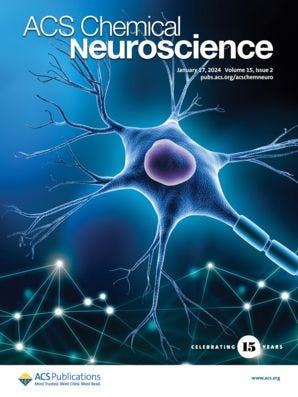Professor Anne M. Andrews is a Professor of Psychiatry and Chemistry & Biochemistry at the University of California, Los Angeles. She is also an Associate Editor at ACS Chemical Neuroscience. Andrews discovered her love of science while in high school. She credits two teachers for inspiring her interests in chemistry through exciting and challenging experiments. […]

Professor Anne M. Andrews is a Professor of Psychiatry and Chemistry & Biochemistry at the University of California, Los Angeles. She is also an Associate Editor at ACS Chemical Neuroscience.
Andrews discovered her love of science while in high school. She credits two teachers for inspiring her interests in chemistry through exciting and challenging experiments. “There was this ability to think about things at the molecular level, and even at that age, that was really quite thrilling to me. So I knew already going to college that I wanted to major in chemistry.”
As an undergraduate at the Pennsylvania State University, she volunteered at the Allegheny County coroner’s office in Pittsburgh. Andrews says this position exposed her to bioanalytical chemistry and instrumentation. She discovered she enjoyed making measurements and collecting data. “I loved when the chromatograms came off the instruments and you could try to figure out what the concentrations of different things were, particularly in really messy environments like you get with biological samples.”
Andrews obtained her Ph.D. in Chemistry from the American University, while carrying out her thesis research at the National Institute of Mental Health in the laboratory of Dr. Dennis Murphy. “I wanted to be exposed to medical research,” she said, “and that left turn, if you will, to the NIH, was one of those wonderfully serendipitous moments in life.” At the NIMH, Andrews was introduced to the serotonin system, which was the focus of Murphy’s work.
Their research together was productive and she stayed in this lab for 10 years. After her doctoral work, Andrews became a postdoctoral fellow and later a senior staff fellow at the NIMH. “It was such an exciting environment,” she said. During that time, she trained in neuroscience and learned about pressing problems in psychiatry, while honing her problem-solving skills from the perspective of an analytical chemist.
Andrews’ first faculty position was back at Penn State in the Department of Chemistry. Now at UCLA, she is working on developing new neurotransmitter sensors. These sensors will enable Andrews and her team, as well as others, to investigate how neurotransmitters function in chemical communication. This could lead to breakthroughs in understanding the normal function of the brain, as well as how brains malfunction. Andrews hopes to help to identify new treatments for brain disorders, particularly depression and anxiety disorders.
“While our research focuses on serotonin, one of our goals in building these truly next-generation sensors is to be able to make them generally applicable to all neurotransmitters, and other small-molecules of importance in biology and beyond. The design principle is modular such that these sensors could be used for almost anything you’d want to measure.”
Read Selections of Professor Anne M. Andrews’ Research in ACS Publications Journals:
Sex- and SERT-Mediated Differences in Stimulated Serotonin Revealed by Fast Microdialysis
ACS Chem. Neurosci., 2015, 6 (8), pp 1487–1501
DOI: 10.1021/acschemneuro.5b00132
Controlled DNA Patterning by Chemical Lift-Off Lithography: Matrix Matters
ACS Nano, 2015, 9 (11), pp 11439–11454
DOI: 10.1021/acsnano.5b05546
Double-Sided Opportunities Using Chemical Lift-Off Lithography
Acc. Chem. Res., 2016, 49 (8), pp 1449–1457
DOI: 10.1021/acs.accounts.6b00034
The BRAIN Initiative: Toward a Chemical Connectome
ACS Chem. Neurosci., 2013, 4 (5), pp 645–645
DOI: 10.1021/cn4001044
